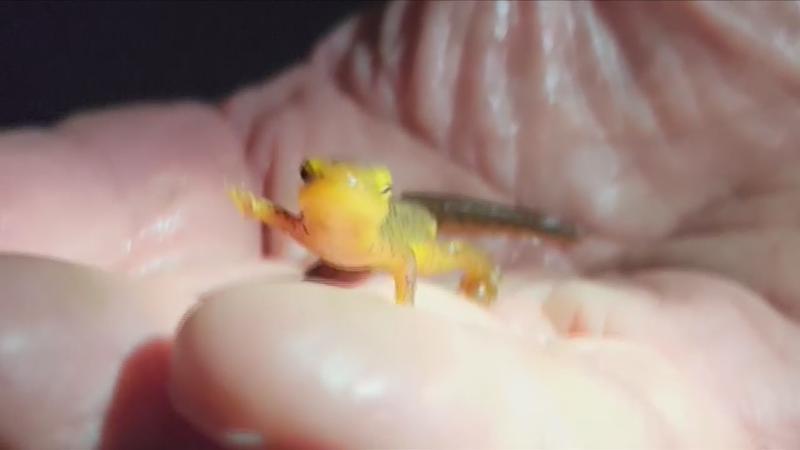Fact Check: Salamander crossing in the Finger Lakes
[anvplayer video=”5098195″ station=”998131″]
HONEOYE, N.Y. (WHEC) — We’ve all seen school crossings or deer crossing signs, but what about salamander crossings? News10NBC got an email about this happening right here in the Finger Lakes. Is it for real? Nikki Rudd is checking the facts.
Spotted salamanders, also known as Ambystoma maculatum, have black to dark gray bodies with two rows of yellow spots. Professor John Bateman from Finger Lakes Community College knows a lot about these little guys. He said they’re very common in our neck of the woods, and when temperatures get into the 40s in the spring, mixed with some rain, the salamanders and other amphibians start migrating.
"There could be thousands of them crossing over about a three-quarter-mile stretch of road down at our (Muller) Field Station," Bateman said.
You read that correctly. They’re moving across County Road 36 in Honeoye from their forest habitat to woodland pools to lay their eggs.
"Picture a walking carpet of these salamanders, newts, frogs, toads across the road moving very slowly," Bateman said.

[News10NBC]
Each year, Professor Bateman and his students get together to help the salamanders survive the journey. One of the biggest issues is traffic.
"It’s a busy road, County Road 36, that is basically bisecting their migratory pathway," explained Bateman.
It’s not recommended you touch them, but if you’re saving their lives Professor Bateman thinks it’s worth it.
"There’s more amphibians at this point that are threatened by extinction than mammals and birds combined," Bateman said.
His goal is to make sure these slimy salamanders stick around here in the finger lakes for a long time.
"When folks actually get to see them, to physically move them, then they care about them," Bateman said. "Then they’re going to help promote their conservation."
So if you heard there’s a salamander crossing in Ontario County, Bateman says, "It’s absolutely a real thing!"
Professor Bateman and his students and volunteers hope to get back out to help the amphibians cross the road a few more nights in the coming weeks. If you’re interested in joining, email Bateman at John.Bateman@flcc.edu. Specific instructions are needed.
Bateman is also giving a talk about the salamander migration on Wednesday, March 30 at the Muller Field Station in Honeoye. It starts at 6 p.m. and will also be streamed live online.